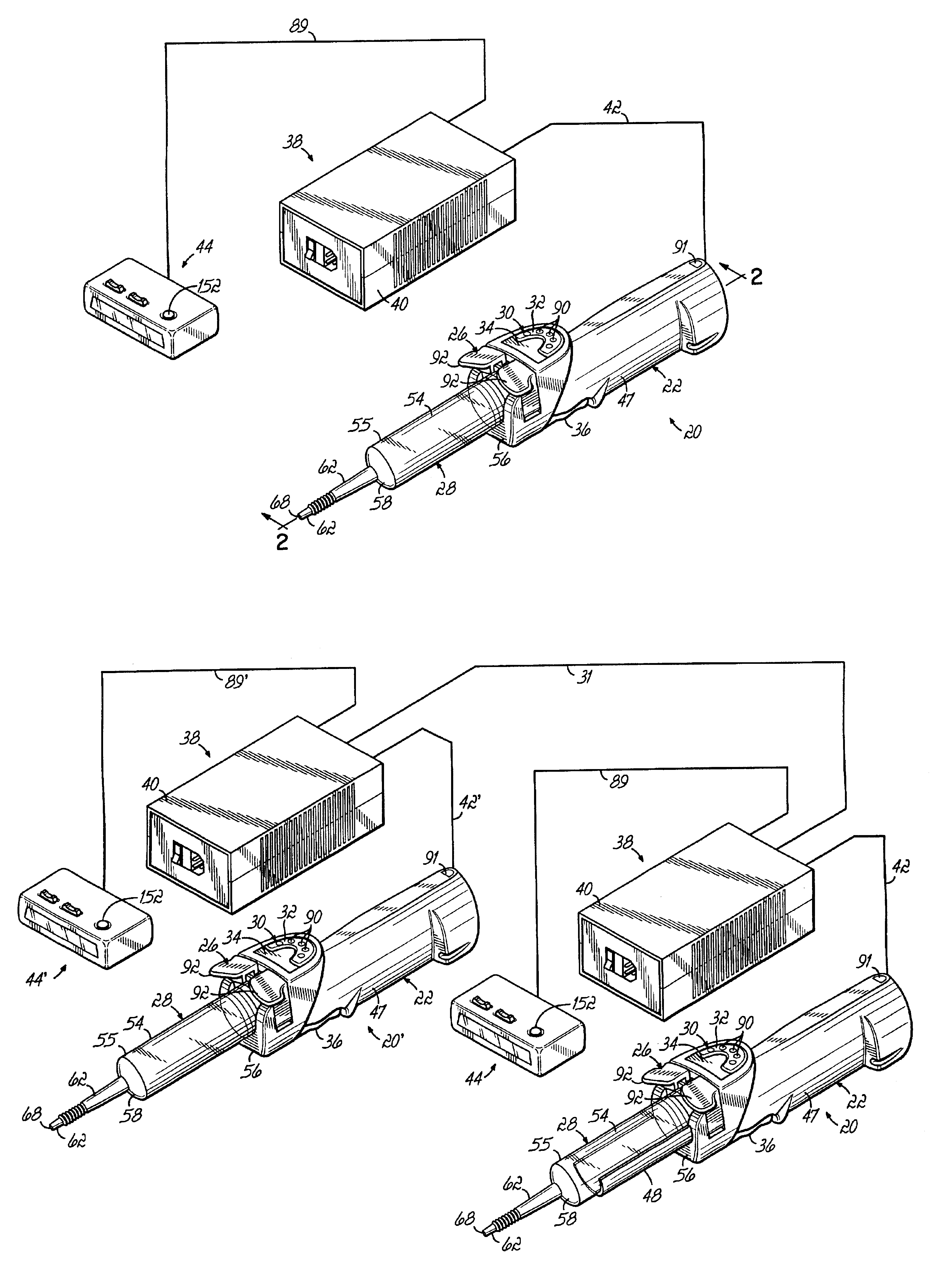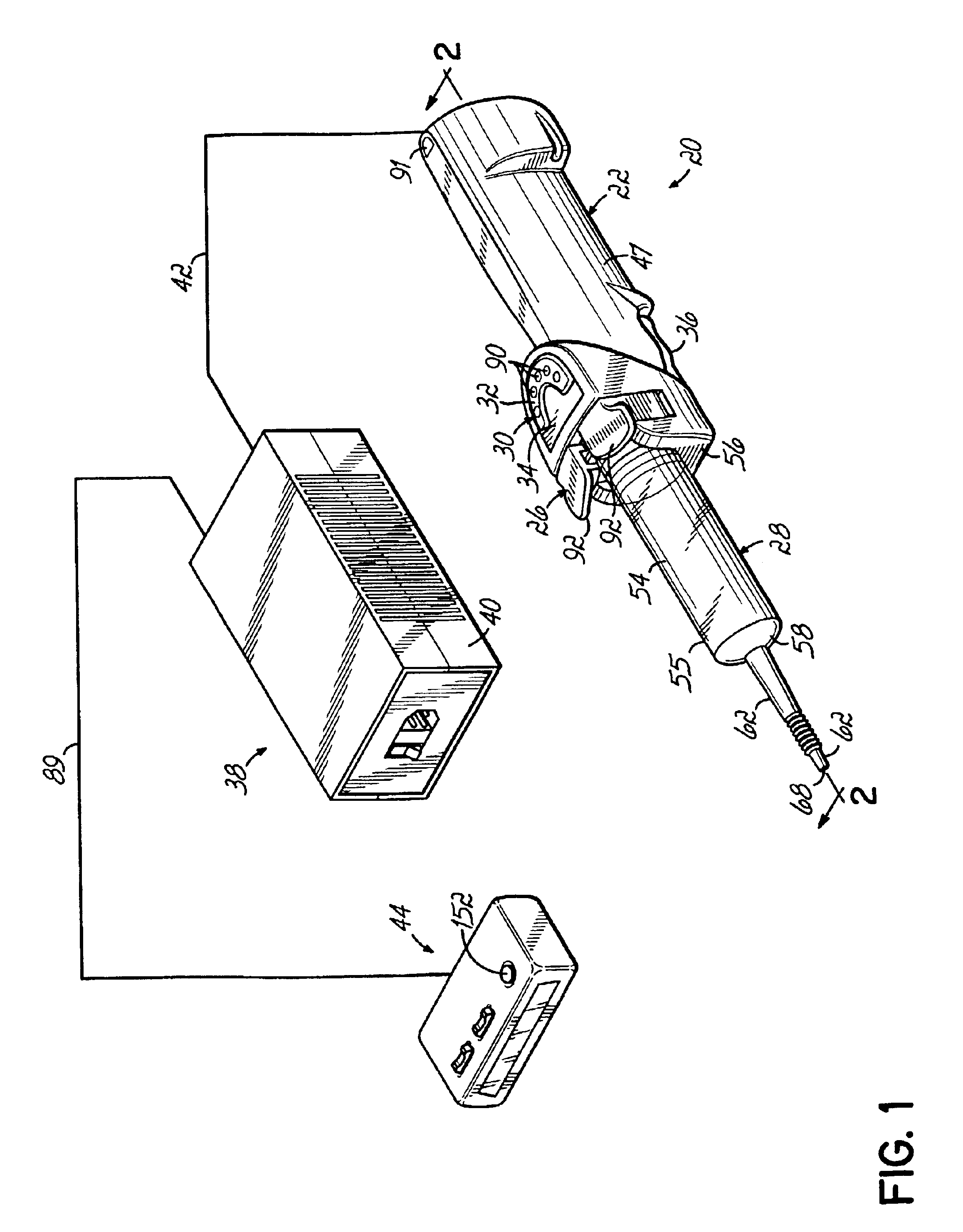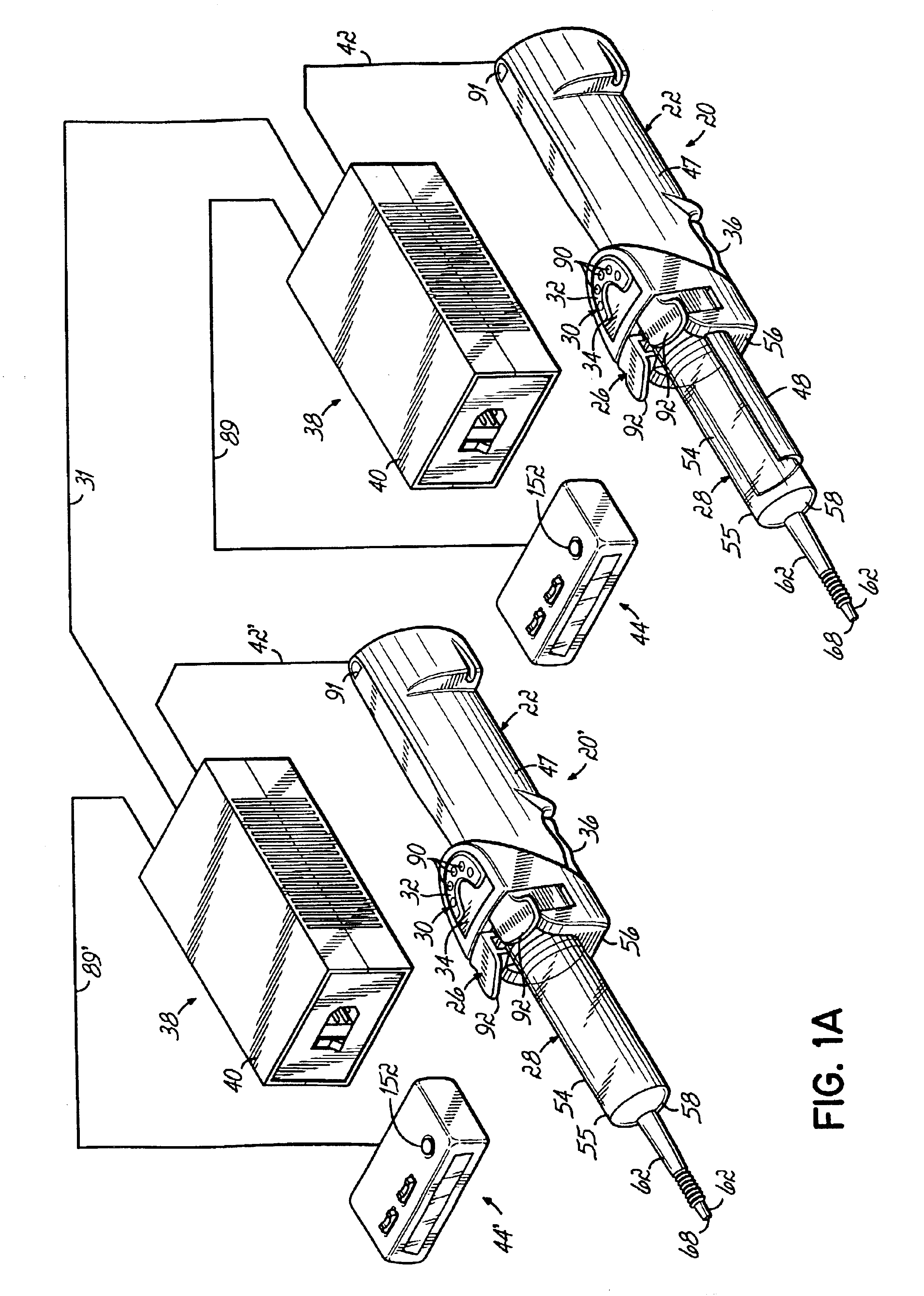There exist many drawbacks to the large injector units described above, which are presently used to inject contrast media and other media.
For example, these large power injectors generally are only available at a high cost.
In many instances, this cost is prohibitive in that it prices many of these injectors out of the range of some small hospitals, and out of the range of developing and third world markets.
Also, this results in injection procedures wherein the contrast media, or other fluid, is delivered by a hand syringe, which is ergonomically unsafe and can lead to cumulative
stress disorders for the user.
Further, the use of a hand syringe provides inferior images as compared to those generated when using a power injector.
Additionally, many costly, large injector units may include a number of features which may not be necessary for the purposes for which they are to be used at some smaller hospitals and other medical facilities.
In addition to the cost concerns discussed above, safety concerns can arise due to the use of these large, and often complex, injectors.
First, these injectors operate at a relatively high pressures, as described above.
For example, access ports are inserted into patients who need medication intravenously, but whose veins cannot tolerate multiple needle sticks.
Access ports that are implanted into patients cannot tolerate many of the high pressures capable of being generated by these large injectors.
Thus, unless the pressure of such an injector is manually reduced, the access ports in a patient can be become over-pressured and possibly fail.
If the technologist forgets to reset the limit to the higher setting once the application has been performed, the desired flow rates may not be achieved during injections for subsequent patients.
This can result in ineffective injections and a waste of media, among other costs attendant to repeating the
injection procedure.
This lack of control over the pressure and flow rates at which an injection proceeds may raise safety issues for the patient or other subject being injected, should an incorrect pressure limit or flow rate be programmed.
Likewise, halting an injection procedure can result in ineffective injections and waste of media, among other costs.
Additional problems arise when attaching a syringe to an injector.
The face plates used in operatively connecting the syringe to the injector may be cumbersome and time-consuming to operate.
Unfortunately, operators have found it cumbersome to use the hand-operated movement buttons and to read the injector head gauges and displays.
Another problem that arises concerns the temperature of the media or other fluid as it is injected.
However, any
lag time involved in removing the media from its warming cradle, and attaching the syringe, and injecting the media, may result in a decrease of the temperature of the media.
Another drawback with presently used injectors is that they are generally incapable of communicating with other injectors.
As a result this only allows for one injector to be programmed and / or used at a time.
Thus, there is generally no ability for different injectors to operate automatically in a sequential fashion.
This situation reduces the overall safety in injection procedures by requiring a
technician or other medical personnel to operate and monitor potentially several different injections simultaneously or in overlapping fashion.
This increases the potential for error in an injection procedure.
Additional problems with current injectors arise due to the use of multiple components which must communicate with one another during an injection procedure.
Another problem that arises from the structure of current injectors is in attempting to maintain the correct placement of the drive ram in order to facilitate the loading and unloading of syringes to the injector.
However, the use of these potentiometers and redundant systems increases the required size and cost of the injectors.
Another problem found in current injectors is in the structure for ensuring that the drive ram does not rotate about its
axis of symmetry during injection.
If the drive ram should rotate away from its original position, it is possible that an operator would then be unable to remove and discard old syringes, and / or attach new syringes to the injector.
However, this structure increases friction which may result in an unsmooth movement of the injector drive ram.
Additionally, any groove in the housing may become blocked which also may disrupt the injection procedure.
 Login to View More
Login to View More  Login to View More
Login to View More 


